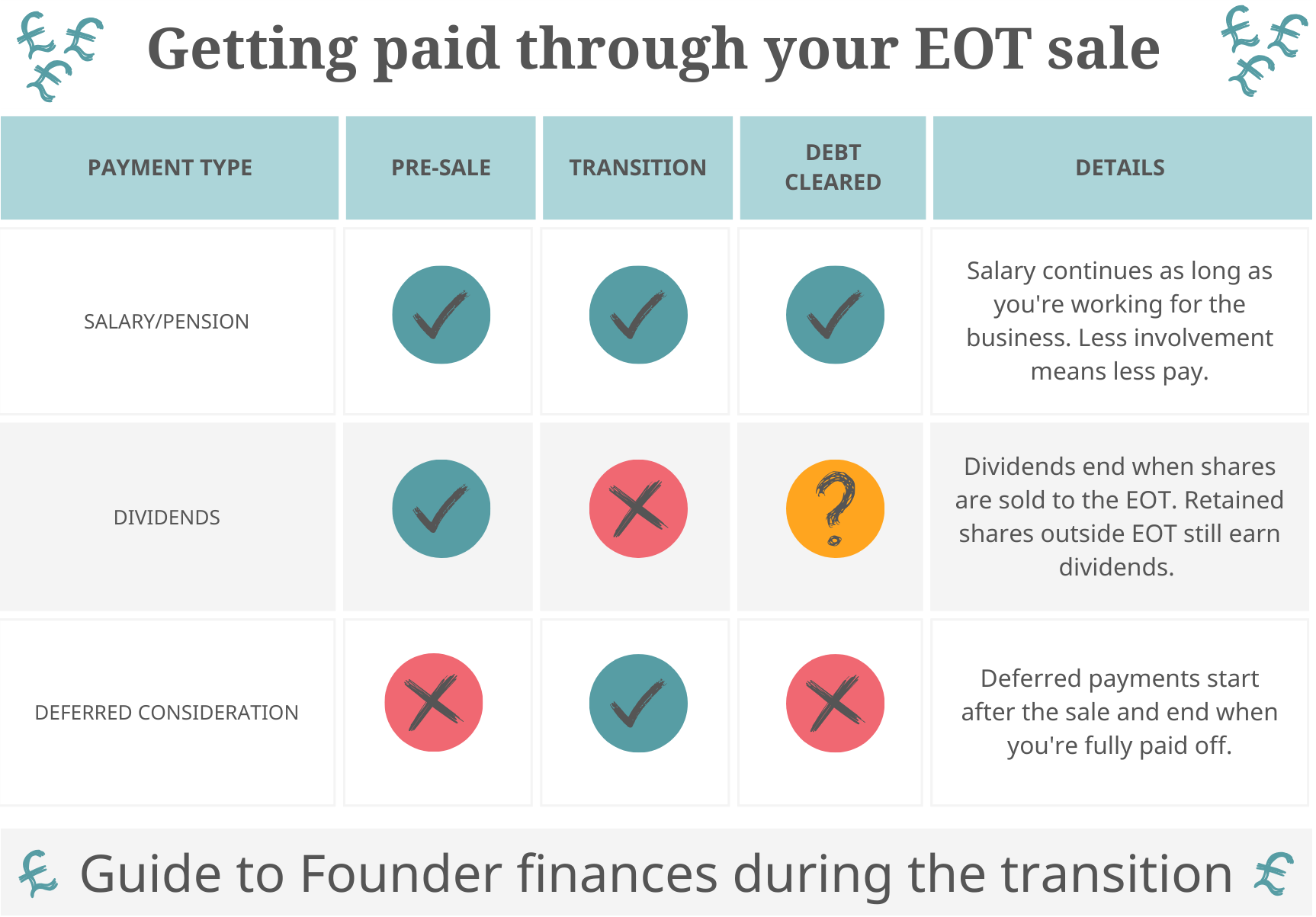Selling to an EOT looks different to a traditional sale – staff don’t pay anything for shares, and no external investor puts money into the business – so how do you, the founder, actually get paid? In the majority of EOT sales, the answer is simple: the money comes from the business. Either from cash already in the bank or from future profits, normally a mix of both.
Three Ways to Fund an EOT
1) Historic profits
Many businesses carry cash reserves – call it a war chest, rainy day fund, or the results of sensible financial planning. If you have money sitting in the business over and above normal working capital requirements, it can be used straightaway to fund part (or occasionally all) of your payout.
Smart tax planning
If you're planning an EOT transition in the next few years, a sensible tactic is to reduce your dividend payments now. Why? Because dividends may be taxed at 39% or more, while the money you receive from an EOT sale receives 50% Capital Gains Tax (CGT) relief.
2) Future profits
In an EOT sale businesses are valued based on profitability, not just cash in the bank. This means the business rarely has enough cash upfront to pay you everything immediately.
That’s where deferred consideration comes in – it’s the portion of the sale price that gets paid from future profits, typically over 3–8 years.
Payment plan
The payment plan outlines how the deferred consideration will be paid – how much, how often, and over how many years. Any remaining profit can go towards staff bonuses or business growth.
Our valuation tool gives you an indicative valuation, plus a suggested payment plan based on your current numbers.
Financial Freedom Day
Some businesses refer to the day the founder is fully paid off as Financial Freedom Day. From that point, more profits can go directly to staff or be reinvested into the business. Whether that day is 3 or 8 years away depends on your valuation and how successful the business is following the EOT sale.
3) External loans
The third way to fund an EOT is by securing an external loan. Although this is possible in theory, in our experience (at the smaller end of the market) it’s not a viable option. The rates of interest on these loans are often very high.
How, what and when do you get paid?
Once the sale completes, your income from the business will likely look a little different. If you’re still working for the business, you continue to receive a salary. Dividend payments depend on whether you’ve retained any shares. We find that most founders waive any dividend payments during the deferred consideration period to help the business focus on paying off the debt.
As the infographic below shows, your payments shift depending on your role and shareholding during each stage of the transition.

Aligned motivations
The beauty of the deferred consideration model is that it aligns everyone's interests. You get paid when the business does well. Staff benefit from profit share as soon as the business can afford it. Everyone has a stake in success – and over time, your role gradually decreases while your senior team steps up.
The ethical balance
When working out the terms of the deal, it's important to bear in mind that selling to an EOT is usually much simpler and smoother than a trade sale. There’s no fussy buyer, poking their nose into every corner of your business looking for any tiny discrepancy that would mean they can demand a lower sale price. Also, half the sale proceeds benefit from Capital Gains Tax relief.
